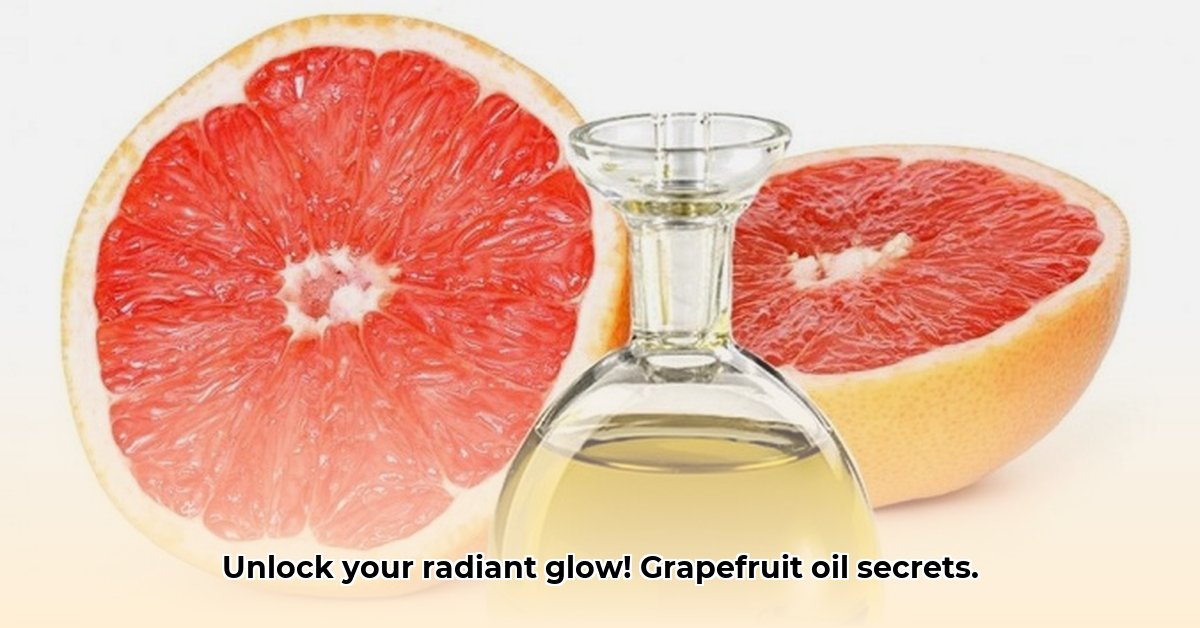
Understanding Grapefruit Oil's Potential for Skin Health
Grapefruit oil, extracted from the rind of the grapefruit, is gaining popularity in skincare due to its potential benefits. This guide explores its uses, emphasizing safety and realistic expectations. We'll examine the scientific evidence and provide a step-by-step guide to incorporating grapefruit oil into your skincare routine. Remember, while anecdotal evidence abounds, more rigorous scientific research is needed to definitively confirm many of its purported benefits.
Grapefruit Oil Composition and Potential Benefits
Grapefruit oil contains various compounds, including Vitamin C, limonene, and citronellal. Vitamin C, a potent antioxidant, protects skin from environmental damage and promotes a youthful appearance. Limonene and citronellal contribute to its scent and may possess antibacterial and brightening properties. However, the extent of these benefits requires further investigation. Is grapefruit oil a miracle cure? No, but its potential warrants further exploration.
What the Science Shows (and Doesn't)
While evidence supports grapefruit oil's antioxidant properties, which can help combat premature aging, claims about its efficacy in treating eczema, psoriasis, and cellulite lack strong scientific backing. Research suggests potential antibacterial effects beneficial for acne, but more studies are needed to confirm this. The impact on collagen production (crucial for skin elasticity) requires further investigation. This means we know some things, but we don't know everything yet. This guide will focus on what is firmly established and avoid unsubstantiated claims.
A Step-by-Step Guide to Safe Grapefruit Oil Use
Before using grapefruit oil, prioritize safety. Always conduct a patch test, dilute the oil, and use sunscreen.
1. The Essential Patch Test: Apply a tiny amount of diluted grapefruit oil (see Step 2 for dilution instructions) to a small, inconspicuous area of skin (e.g., inner elbow) and wait 24 hours. Observe for any redness, irritation, or itching. If a reaction occurs, discontinue use. This simple test safeguards against potential allergic reactions.
2. Dilution is Paramount: Never apply undiluted grapefruit oil directly to your skin. Its high concentration can cause severe irritation. Always dilute it with a carrier oil like jojoba, argan, or sweet almond oil. A recommended starting ratio is 1-3% grapefruit oil to the carrier oil (e.g., 3 drops of grapefruit oil to 1 teaspoon of carrier oil). Dilution minimizes the risk of irritation and maximizes safety.
3. Sun Sensitivity and Sun Protection: Grapefruit oil can increase your skin's photosensitivity. This means you are more susceptible to sunburn. Always apply a broad-spectrum sunscreen with an SPF of 30 or higher, especially after using grapefruit oil. Reapply sunscreen every two hours, particularly if you are outdoors. Sun protection is crucial after using grapefruit oil.
4. Consistency and Patience: Don't expect overnight miracles. Consistent use, combined with a healthy lifestyle, is key. Results may take several weeks to become noticeable. Be patient and allow your skin time to react.
5. Listen to Your Skin: If you experience any irritation, redness, or other adverse reactions, stop using the oil immediately and consult a dermatologist. Your skin is your best guide.
Grapefruit Oil: A Balanced Perspective
Here's a summary of the benefits and drawbacks:
| Pros | Cons |
|---|---|
| Powerful antioxidant, protects against damage | Potential for skin irritation (always do a patch test!) |
| Antibacterial properties, may help fight acne | Photosensitivity – requires diligent sun protection |
| May brighten skin tone | Limited scientific evidence for some claimed benefits |
| Potentially improves skin elasticity | May interact with some medications; consult your doctor |
| Pleasant, uplifting scent | Needs to be diluted; cannot be used directly on the skin |
Conclusion: Informed Use is Key
Grapefruit oil offers potential skincare benefits, but it's crucial to approach its use responsibly. Always prioritize safety by conducting a patch test, diluting the oil properly, and using adequate sun protection. While promising, further research is needed to definitively establish the extent of its purported benefits. For specific skincare concerns or if you are taking medication, consult a dermatologist or qualified skincare professional.